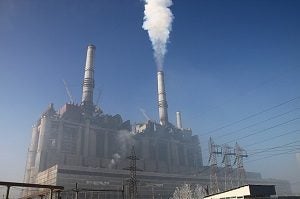Grinch utilities and regulators spoil holidays by forcing customers to pay billions for Midwest coal plants
 Thanks to Midwest utilities, regulators and a pair of unprofitable power plants, electricity customers in Ohio, Kentucky and Indiana will get a lump of coal this holiday season. The owners keep running these plants at a big loss – projected at over $5 billion – resulting in higher electricity prices and polluting power that isn’t needed.
Thanks to Midwest utilities, regulators and a pair of unprofitable power plants, electricity customers in Ohio, Kentucky and Indiana will get a lump of coal this holiday season. The owners keep running these plants at a big loss – projected at over $5 billion – resulting in higher electricity prices and polluting power that isn’t needed.
A challenging setup
As part of the Ohio Valley Electric Corporation (OVEC), the two plants sit in southern Ohio and Indiana. Nearly 65 years old, these plants were built to power a plant in Piketon, Ohio that enriched uranium for nuclear weapons for the Cold War. The uranium facility ceased operations in 2001, but the power plants continue on.
The plants’ unique ownership structure is now preventing them from being shut down. The original idea was that no single utility could absorb the risk of building two power plants to serve one customer – the Piketon Plant. So the Department of Defense cajoled 13 utilities in Ohio, Kentucky and Indiana to each own a small share of the plants.
All owners must agree on major decisions, like shuttering the plants. If regulators in any of the three states allows one of the co-owners to recover operating costs (despite the fact that the plants are operating at a loss), then that company has an incentive to keep the plants open – even though the other owners would like to close the uneconomic plants.
Utility customers get nothing but coal from expensive, convoluted deal in Ohio Share on XHuge losses
How bad is it? The latest OVEC annual report shows that in 2017, the owners suffered a whopping loss of over $270 million!*
It gets worse. One of the owners – FirstEnergy Solutions – recently declared bankruptcy, and is trying to use that as an excuse to walk away from the OVEC mess. If it is forced to stay in the ownership arrangement and buy its share of the power, FirstEnergy states that it will lose $268 million over the remaining life of the contract. Since FirstEnergy owns approximately 5 percent of the OVEC plants, the total losses will exceed $5 billion.**
The real losers are customers, who are forced to eat these billions of dollars in losses by overpaying for electricity.
Moreover, the power isn’t even needed to keep the lights on. The OVEC plants amount to 2,400 MW of electric capacity, while the regional grid operator has 18,000 MW under construction that will come on line in the next couple of years.
Indeed, the OVEC plants are a big fat lump of coal in customers’ stockings. EDF’S Christmas wish is that regulators in Ohio, Kentucky and Indiana would stop making customers pay for these plants, and reject integrated resource plans that include the plants as part of the portfolio for serving customers.
*In 2017 (the latest date for which data is available), the OVEC plants produced 11,700,000 MWh of electricity for the co-owners, at an average cost of $54.27 per MWh. PJM, the regional grid operator for Ohio, Kentucky and Indiana, had an average price of $30.99 per MWh in 2017. So the OVEC owners overpaid $23.28 per MWh for 11,700,000 MWh of power in 2017 – more than $270 million.
**$268 million times 20 equals $5.3 billion.










